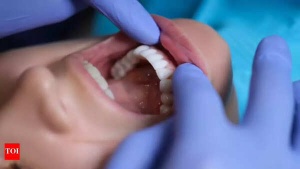A dog bite, whether from a stray or household pet, poses a serious risk of rabies, a deadly viral infection that attacks the nervous system. Rabies spreads through the saliva of infected animals and can enter via bites, scratches, or even licks on broken skin. Once symptoms appear, the disease is almost always fatal, causing brain inflammation and death. However, timely action can save lives. Immediate wound cleaning, prompt medical evaluation, and starting post-exposure prophylaxis (PEP), including vaccination, drastically reduce the risk of infection. Acting quickly after a bite is critical to preventing rabies and ensuring complete recovery.
WHO guidelines on rabies prevention
According to the World Health Organisation (WHO), rabies prevention relies on three proven strategies: community awareness, prompt post-exposure prophylaxis (PEP), and mass dog vaccination. Educating communities about bite prevention, symptoms to watch for, and the importance of immediate medical care empowers people to act swiftly after exposure.
PEP, comprising thorough wound cleansing followed by rabies vaccination and immunoglobulin (when needed), is almost 100% effective in preventing rabies when administered promptly. At the same time, vaccinating dogs at scale tackles the disease at its source, significantly reducing transmission and human cases
5 immediate steps to take after a dog bite to avoid rabies
1. Wash the wound thoroughlyThe first and most crucial step is cleaning the wound immediately.
Hold the bite under running water for at least 15 minutes and wash thoroughly with soap to remove saliva and dirt. After this, apply an antiseptic solution. Avoid harmful home remedies like chilli, lime, or turmeric, as they increase infection risk. Proper washing alone can reduce the chances of rabies transmission by up to 90%.
2. Stop the bleeding and cover safelyIf the wound is bleeding, gently press with a clean cloth or bandage until it slows. Do not try to close deep wounds with tight bandages or stitches before medical advice, as this can trap the virus inside. Instead, loosely cover the wound with a sterile dressing to protect it from dirt and infection until you see a doctor.
3. Seek immediate medical attentionEven minor bites can transmit rabies. Visit a healthcare professional as soon as possible, preferably within hours of the bite. Inform the doctor about the biting animal, whether it was vaccinated, stray, or showed unusual behaviour. Your doctor will assess the wound, check your tetanus vaccination status, and prescribe antibiotics if needed to prevent secondary infection.
4. Begin Post-Exposure Prophylaxis (PEP)Post-Exposure Prophylaxis is the life-saving treatment that prevents rabies. According to CDC it includes:
Rabies Immune Globulin (RIG): Injected on Day 0, directly around the wound, to neutralise the virus locally.
Rabies Vaccine: A series of injections on Days 0, 3, 7, and 14 (sometimes Day 28).
PEP is nearly 100% effective if started promptly and completed as advised. Never skip or delay doses, even if the dog appears healthy later.
5. Monitor the animal and yourselfIf the dog is a pet or can be observed, keep it under observation for 10 days for any signs of illness or unusual behaviour. Meanwhile, watch for symptoms in yourself, such as fever, tingling at the bite site, or difficulty swallowing, although treatment should always begin before symptoms appear. Do not wait for confirmation of rabies before starting PEP.
Symptoms of rabies to watch for
While PEP should begin before symptoms appear, recognising early signs is vital:
- Fever and weakness
- Tingling or itching near the bite site
- Anxiety, agitation, or confusion
- Difficulty swallowing and fear of water (hydrophobia)
- Muscle spasms or paralysis in the advanced stage
Once these symptoms develop, rabies is almost always fatal.
Preventing rabies before it happens
- Avoid contact with stray or unknown animals.
- Vaccinate your pets: Dogs and cats should receive timely rabies vaccinations.
- Educate children: Teach kids not to approach or tease unknown animals.
- Pre-exposure vaccination: Recommended for people travelling to high-risk areas or those working in veterinary, animal rescue, or wildlife fields.
- Community measures: Encourage animal birth control and vaccination drives in your locality.
Why do dogs lick their paws: Know is it allergy, infection, anxiety or something else?
 Gavaskar Calls for Kuldeep Yadav's Inclusion in Second Test Amid Bumrah Fitness Concerns
Gavaskar Calls for Kuldeep Yadav's Inclusion in Second Test Amid Bumrah Fitness Concerns
 Early Warning Signs: 5 Heart Attack Symptoms to Watch Out For a Month in Advance
Early Warning Signs: 5 Heart Attack Symptoms to Watch Out For a Month in Advance
 Oral Cancer: Spot the Signs, Understand the Risks, and Why Early Detection is Key
Oral Cancer: Spot the Signs, Understand the Risks, and Why Early Detection is Key
 Rishabh Pant's Composed Reply Deflates Harry Brook's Sledge in Edgbaston Test: Watch Key Moments
Rishabh Pant's Composed Reply Deflates Harry Brook's Sledge in Edgbaston Test: Watch Key Moments
 FIFA Club World Cup 2025: Upsets, Messi Magic, and 2026 World Cup Concerns Emerge From Group Stage
FIFA Club World Cup 2025: Upsets, Messi Magic, and 2026 World Cup Concerns Emerge From Group Stage
 Rohit Sharma Credits Barbados as India's Lucky Ground After T20 World Cup Triumph
Rohit Sharma Credits Barbados as India's Lucky Ground After T20 World Cup Triumph
 Jaiswal Aims to Eclipse Gavaskar's 49-Year-Old Record in Edgbaston Test Showdown
Jaiswal Aims to Eclipse Gavaskar's 49-Year-Old Record in Edgbaston Test Showdown
 Science-Backed: Simple Habits for a Stronger Heart, According to Experts
Science-Backed: Simple Habits for a Stronger Heart, According to Experts
 Prithvi Shaw Admits to Missteps, Lost Focus Amid Career Setbacks
Prithvi Shaw Admits to Missteps, Lost Focus Amid Career Setbacks
 India's Fielding Failures Under Scrutiny After First Test Defeat to England: Former Selector критикует Dropped Catches
India's Fielding Failures Under Scrutiny After First Test Defeat to England: Former Selector критикует Dropped Catches